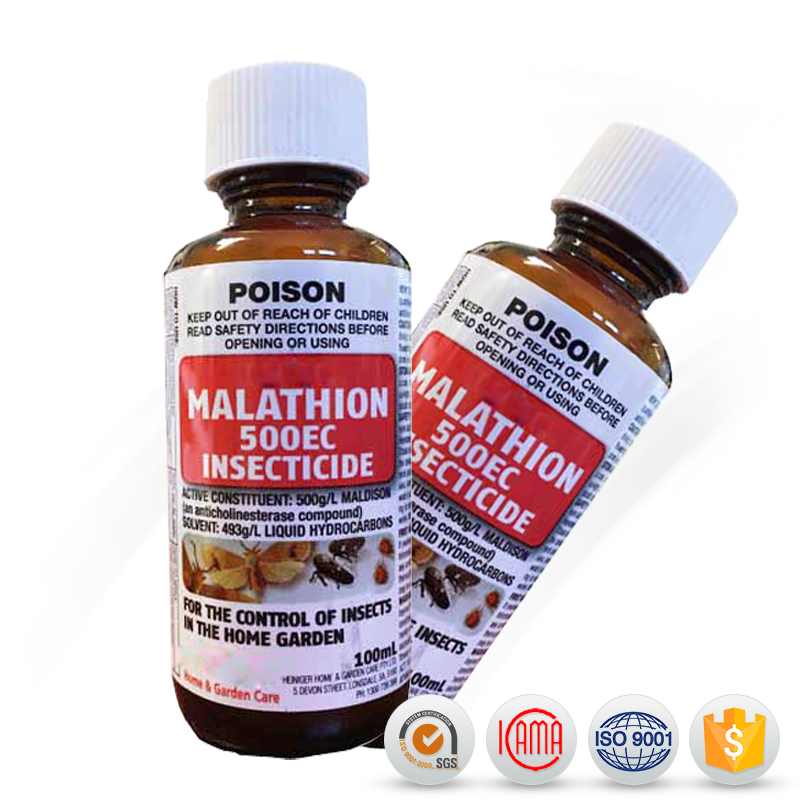Insecticides are chemical substances used to kill or control harmful insects. They are widely used in agriculture, health and horticulture to protect crops, the home environment and public health. Insecticides are widely used in agriculture and health. They not only increase crop yields but also effectively prevent the spread of diseases.
What are the types of insecticides?
Insecticides can be categorized into different types such as organophosphates, carbamates, pyrethroids, neonicotinoids, and organochlorines, each of which has its own specific chemical composition and mode of action, and are used to control different types of pests and protect crops and human health. Next, we'll look at what classifications and typical products are available.
Classification according to chemical composition
Organophosphorus Insecticides
Organophosphorus insecticides are a class of widely used insecticides that inhibit the enzyme acetylcholinesterase in insects, leading to the disruption of the insect's nervous system and death.
Dichlorvos (DDVP)
Malathion
Carbamate Insecticides
Carbamate insecticides interfere with nerve conduction in insects by inhibiting the enzyme acetylcholinesterase. These insecticides are highly effective and fast-acting.
Methomyl
Pyrethroid Insecticides
Pyrethroid insecticides are synthetic pyrethroid compounds that exert their insecticidal effects by affecting nerve conduction in insects. They are characterized by low toxicity, high efficiency and environmental friendliness.
Cypermethrin
Neonicotinoid Insecticides
Neonicotinoid insecticides are a new generation of insecticides that kill insects by binding to their nicotinic acetylcholine receptors, leading to overstimulation of the central nervous system and death.
Organochlorine Insecticides
Organochlorine insecticides are a group of traditional insecticides that are long-lasting and broad-spectrum, but their use is limited due to their environmental persistence and bioaccumulation. Common organochlorine insecticides include DDT (Dichlorodiphenyltrichloroethane) and chlordane.
Classification according to mode of action
Touch insecticides
Touch-type insecticides act by direct contact with the insect's epidermis. This type of insecticide includes many organophosphorus and pyrethroid compounds.
Stomach Toxicant Insecticides
Stomach Toxicant are ingested by insects and exert their toxic effects in the body. Common gastric insecticides include carbamates and some organophosphorus compounds.
Systemic Insecticides
Systemic insecticides can be absorbed by the plant and conducted to various parts of the plant, thus protecting the entire plant from pests. This type of insecticide includes imidacloprid and furosemide.
Classification according to use
Agricultural Insecticides
Agricultural insecticides are mainly used to protect crops from pests and to improve yield and quality. These include the widely used organophosphorus, pyrethroid and neonicotinoid insecticides.
Sanitary Insecticides
Sanitary insecticides are used to control vector insects such as mosquitoes, flies and cockroaches to prevent the spread of disease. Such insecticides include deltamethrin and cypermethrin.
Horticultural Insecticides
Horticultural insecticides are mainly used to protect flowers, ornamentals and fruit trees from pests. These insecticides often include low-toxicity, highly effective pyrethroids and neonicotinoids.
Mechanism of action of insecticides
Effects on the nervous system of insects
Many insecticides work by interfering with the nervous system of insects, for example, organophosphorus and carbamate insecticides inhibit the enzyme acetylcholinesterase, leading to nerve conduction disorders and paralyzing insects to death.
Effects on the endocrine system of insects
Certain insecticides prevent the growth and reproduction of insects by disrupting their endocrine system, e.g., insect growth regulators (IGRs), which inhibit the synthesis or action of insect moulting hormones.
Effects on the respiratory system of insects
Some insecticides kill insects by affecting their respiratory system, preventing them from breathing properly. For example, fumigants enter the insect's body in a gaseous form and interfere with its normal respiratory processes.
Insecticide application methods
Spraying
Spraying is the most common method of insecticide application. It directly contacts and kills pests by spraying the insecticide solution on the surface of the plant or where the pests congregate.
Rooting
The root irrigation method involves pouring the insecticide solution directly into the roots of the plant, so that it is absorbed by the plant and conducted to all parts of the plant to provide protection. This method is commonly used for systemic insecticides.
Fumigation
The fumigation method utilizes the gaseous form of the insecticide, which is released in a closed environment to achieve the effect of comprehensive killing of pests. This method is commonly used in confined environments such as grain storage, warehouses and greenhouses.
Spreading method
The application method involves applying the insecticide directly to the area where the pests are active or to the surface of the plant, and is suitable for localized killing of pests and control of specific pests.
Insecticides are indispensable products in agriculture and health, and can be categorized into a wide range of types based on chemical composition, mode of action, and use. From highly effective organophosphorus insecticides to environmentally friendly neonicotinoids, each has its own unique advantages. Choosing the right insecticide can effectively protect crops from pests and ensure the quality and yield of agricultural products. Not only that, insecticides also play an important role in the health sector, helping to control vector insects and safeguard public health. Therefore, the understanding and proper use of various types of insecticides is essential for agricultural production and health prevention.
Post time: May-24-2024











